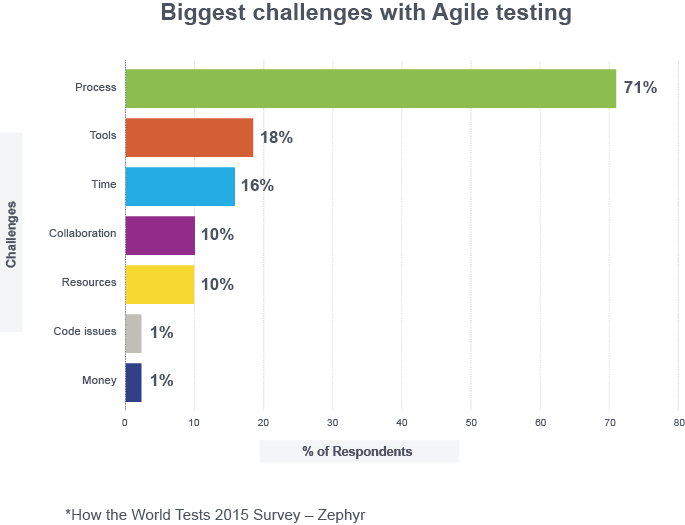How the Right Tools Can Help You Overcome Common Agile Pain Points

Agile is a major undertaking for any business as it requires significant changes, and there are a number of issues that teams can experience along the way. There are a number of approaches that quality assurance and development staff can take to better support agile, but their efforts will only be successful if they have the best resources at their disposal. Let's take a look at some common agile pain points and how the right tools can help organizations overcome these issues.
Dissecting Agile Challenges
Software development processes are becoming increasingly complex, and agile can often add to this chaos if teams aren't prepared. In fact, according to Zephyr's annual How The World Tests Report, 71 percent of people noted that not having the right process or having the process and not being able to implement it was the biggest factor holding them back with agile testing. In contrast, less than 20 percent of participants noted challenges in other areas such as tools, time, communication, and resources.

Zephyr stated that organizations should assess their current processes, identify what isn't working, and make changes happen. This way, teams will generate procedures that work and naturally evolve project decisions. It's also important to note that a lack of appropriate tools can be tied to the processes being used. Without the right workflows in place, teams can't expect their assets to align with their strategies. However, by creating solid processes, QA can choose test management tools to improve capabilities and drive quality.
Leverage Metrics for Future Solutions
Having data on-hand can be a critical resource for teams when planning their next phase and ensuring that they are meeting user expectations. VersionOne noted that many times agile management teams perform inadequate analysis and therefore aren't able to create a coherent strategy. When they don't know what to build or what test cases to use, QA wastes a lot of time, and can end up with processes that aren't effective for their needs.
However, utilizing software testing metrics gives QA better oversight of their operations and what areas need more attention. This type of information will not only give them a better idea of what functionality they need to build, but it will also help them determine how to accomplish their tasks. Historical data will show what has worked in the past and can provide inspiration on how to revise these actions to work in the future.
"Instead of a phased approach with big up-front design, development, coding, testing then roll out to market, Agile delivers highest value, highest priority features first meaning teams can quickly and easily test market demand and need," Information Age contributor Chloe Green wrote. "By taking this inspect and adapt approach, changes can be made along the way to ensure that the project delivers the right things, to the right people, at the right time."
There are a number of challenges to contend with when transitioning to agile. However, with the right tools, teams will be able to support these environments and empower QA teams.

